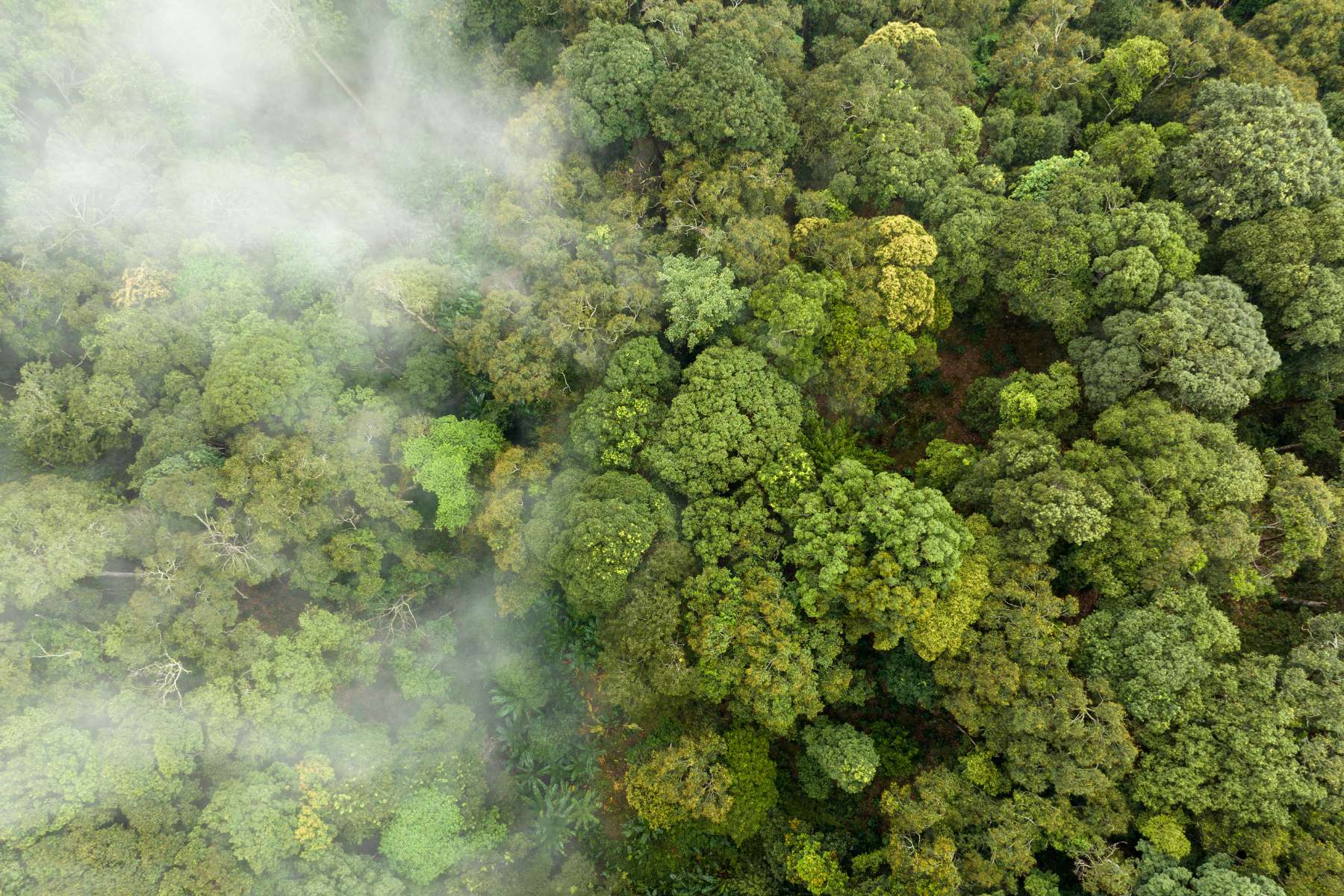
Get news, updates, & event Info delivered right to your inbox:
What is Deforestation?
Deforestation is a major environmental issue: between 2015 and 2020, the rate of deforestation was approximately 10 million hectares per year. And although that rate of loss has slowed over the last 30 years, according to The State of the World's Forests 2022 report it hasn’t decreased enough. Over 420 million hectares of forest have been lost since 1990.
Of that, around 80 million acres were ecologically important primary forests. Another 100 million acres of forest are directly threatened by forest fires, pests, diseases, invasive species, drought, and extreme weather events. Many of these snowballing threats are driven and/or amplified by climate change.
Because deforestation often takes place in diversity-rich ecosystems, a number of species are threatened. But how exactly does deforestation affect local ecosystems?
Let’s examine how deforestation can impact some of our most important ecosystems — and learn how to protect these critical landscapes.

Habitat Loss
Forest ecosystems encompass richly layered habitat types, which provide shelter to a breathtaking range of biodiversity — including 80% of amphibian species, 75% of bird species, and 68% of mammal species. From the Kirtland’s warbler that builds a nest amongst trees to the millions of species of plants, insects, and microorganisms scientists estimate are still undiscovered in tropical rainforests, countless species depend on trees to survive. When deforestation occurs, many species are unable to survive in the remaining fragments of forest. According to the World Wildlife Fund, this can make them more accessible (and therefore, vulnerable) to hunters and poachers; their populations are reduced, and some go extinct. Because many endemic species live in small, isolated locations, any amount of deforestation can result in extinction.

Increase in Greenhouse Gases
Trees not only provide critical habitat for many animal species, but they also help clean the air and remove carbon from the atmosphere. Deforestation means there are fewer trees available to sequester carbon — at a time when we need to reduce greenhouse gasses more than ever. And forest loss itself can accelerate the effects of climate change. According to the World Economic Forum, if deforestation were a country, it would be the third largest CO2 emitter in the world after China and the US.

Desertification and Soil Erosion
Trees have intricate root systems that help prevent soil erosion by holding the soil firmly in place. Their leaf canopies also help prevent erosion by slowing and absorbing precipitation. By helping the land retain water and remain healthy, the soil is able to provide rich nutrients to help sustain life. When deforestation occurs, soil is significantly more likely to erode. Erosion reduces soil fertility, which can negatively impact crop yields. During precipitation events, soil-laden water is also more likely to travel downstream, collecting in heavy layers of sediment that can cause significant damage to watersheds.

Disrupted Water Cycle
Forests don’t just improve water quality and flow: they also play a critical role in our water cycle by regulating precipitation, evaporation, and flows. The entire forest structure, from the canopy to the roots, stores and releases water vapor — controlling rainfall. Deforestation directly impacts this important function, destabilizing rainfall patterns and increasing the likelihood of flooding and drought. And these effects aren’t just local — studies have shown that deforestation in one part of the world can cause significant decreases in rainfall thousands of miles away.

Local Communities
While we often think of forests in connection with the environment and nature, many communities rely on their local forests. There are about 250 million people who live in forests and rely on trees for their incomes and to sustain their livelihoods. While deforestation can greatly affect people’s livelihoods, it also leads to more infectious diseases in humans. These are just a few of the ways deforestation can directly affect people
Deforestation is certainly scary. But there are ways we can help. By planting trees in areas that have been degraded or deforested, we can support the environment by guaranteeing or accelerating the re-establishment of healthy forest cover.
Reforestation can also protect biodiversity, stabilize the soil, support the water cycle, and slowly restore the vital ecosystem services we depend on. So, let's get to it — plant trees with us today!
Get news, updates, & event Info delivered right to your inbox:
Related Posts
Real vs. Fake Christmas Trees: Which is Better For the Environment?
20/11/2025 by Meaghan Weeden
8 Reasons to be Grateful for Trees This Thanksgiving
18/11/2025 by Meaghan Weeden
The Ultimate Guide to Sustainable Holiday Gifting
13/11/2025 by Meaghan Weeden
Popular On One Tree Planted
What Causes Deforestation?
10/07/2025 by Meaghan Weeden
8 Amazing Bamboo Facts
14/01/2025 by Meaghan Weeden
Inspirational Quotes About Trees
09/01/2025 by Meaghan Weeden
Fundraising Disclosures

Be Part of the
Restoration Movement
The Grove is more than just a monthly giving program: it's a vibrant community of individuals who are dedicated to reforestation and environmental restoration on a global scale.
As a member of The Grove, you affirm your commitment to restoring forests, nurturing biodiversity, and fostering positive global change.





